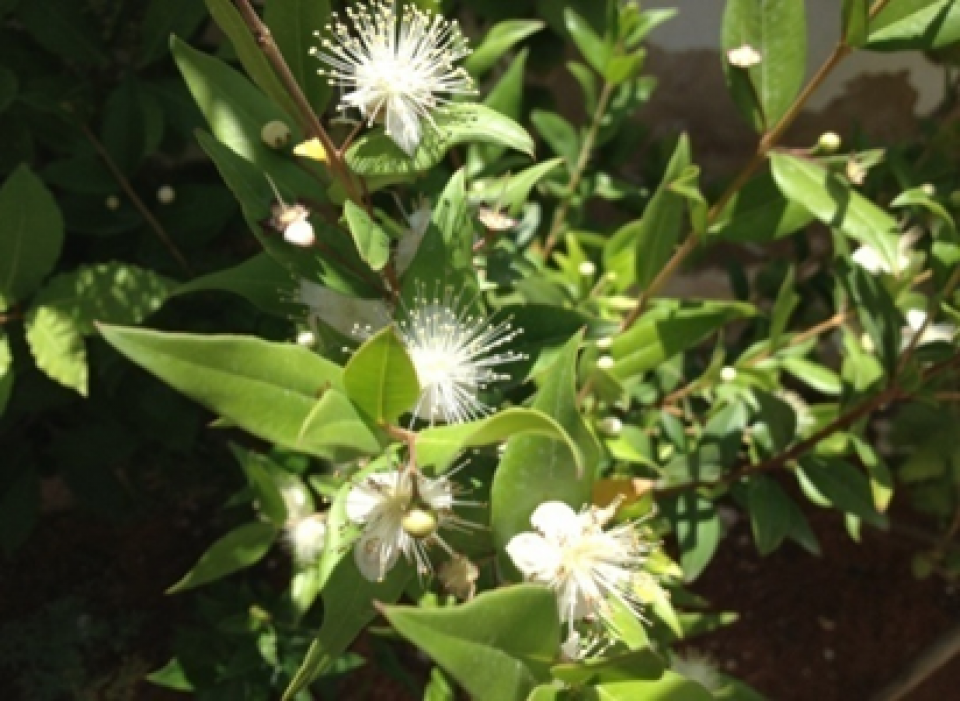
The Myrtus communis L. is an endemic species appreciated traditionally for its medicinal and aromatic properties. Improving the multiplication and propagation methods of the common myrtle is the most important objective of this paper. The work was held to conserve the species and its decreasing populations due to the lake of management, overcutting and Anthropozoic pressure in its location area.
The areas occupied by this species (80,000 ha in 1990; DGF, 2010) tend to decrease due to poor management of spontaneous populations, overgrazing, and clearing due to excessive local exploitation (Mahmoudi et al., 2007 ). All these observations push us towards better mastering the technique of multiplication of this native species, object of this work, in order to better preserve it for future generations.
We performed a series of tests (germination, vitality, calculation of the number and initial weight of the seeds, etc.) on the fresh material to have useful data to predict, the number of replicas of the tests and the number of seeds per reply, as well as monitoring the productivity of the population. The seeds are cleaned mechanically using a blender and are then separated from the debris using different sieves. Scarification with Sulfuric acid (H2SO4) for 5 to 10 minutes made it possible to obtain very satisfactory results. The results obtained from the germination tests on Myrtus communis showed an average germination rate of 90%.
To get the best results for Myrtus seed germination, we recommend the following steps:
- Collect mature fruits to have the best quality of the seeds
- Clean and dry the seeds before treatment.
- Using chemical scarification to left the dormancy and improve seeds germination capacity by putting them in Sulfuric acid for 5 to 10 min
- Put the seeds in petri dishes between 2 filter papers soaked in water and under controlled temperature and humidity.
- Keep the seeds moist.
- Transplant the germinating seeds into a mix of peat and sand with a temperature of 25°C.
A germination rate of 90% is important to improve the status of the species in Tunisia. However, these results require more investigation to best control the germination of this endangered species. A transplant of the plants obtained under natural conditions must be carried out to have an idea about the behavior of the species. Absence of protected form of the species at the national-level.
For future work we plan to further deepen germination tests by testing other techniques. To improve the situation of the species and increase its population, it is necessary to transplant the species in natural conditions and study these adaptive capacities. The choice of transplant site is very important in this case.
Salma Sai-Kachout, salmasey@yahoo.fr, http://www.inrat.agrinet.tn/
Issam Touhami, issam_touhami@yahoo.fr, www.inrgref.agrinet.tn
Hamdi Aouinti, hamdiiouinti@gmail.com, www.inat.tn
Touhami Rzigui, rziguitouhami@gmail.com, www.ispt.agrinet.tn
Further information
This work is the output of ECOPLANTMED project (www.ecoplantmed.eu)
DGF-La Direction Générale des Forêts. 2010. Résultats du deuxième inventaire forestier et pastoral national (IFPN).
Mahmoudi, R., Naoufel, S., Khouja, M.L., Manef, A., Rejeb, M.N. 2007. In vitro micropropagation of myrtle (Myrtus communis L.). Revue des régions arides, 2: 787-794.
Issam Touhami

Issam Touhami
